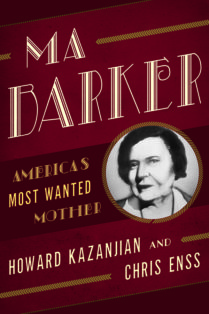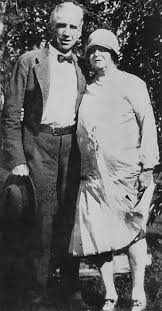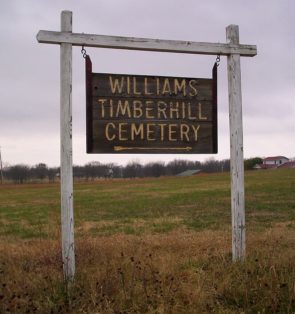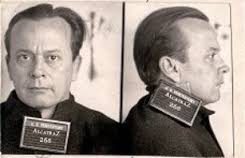Enter to win a copy of the new book
Ma Barker: America’s Most Wanted Mother
In a time when notorious Depression-era criminals were terrorizing the country, the Barker-Karpis Gang stole more money than mobsters John Dillinger, Vern Miller, and Bonnie and Clyde combined. Five of the most wanted thieves, murderers, and kidnappers by the Federal Bureau of Investigation (FBI) in the 1930s were from the same family. Authorities believed the woman behind the band of violent hoodlums that ravaged the Midwest was their mother, Kate “Ma” Barker.
Kate Barker marched her fifteen-year-old son, Herman, through the remains of a cornfield outside Webb City, Missouri. Using the collar of her boy’s shirt as a lead, she steered him past bent and weathered stalks of corn. It was a hot, humid, September afternoon, all white light and glare. Herman chanced a look back at his mother, hoping the scowl on her face had softened. Kate wore a gray sweater embellished with rhinestone buttons and a blue- and- white plaid rayon dress with a sashed belt and bow collar. Her hair was nicely coiffed with spit curls on each temple in the style of the times. Although she had been born and raised in the rural Ozark Mountains and married a miner from a nearby town, she was no house Frau. She carried her plump, five-foot four-inch frame with a confidence generally relegated to those with a wealthy, sophisticated background.
Herman was dressed in jeans and an old shirt two sizes too big for him. He was barefoot and occasionally grimaced when his toe connected with a jagged rock on the ground. His mother was furious with him and disinterested in how uncomfortable their fast-paced walk made him. Herman had been caught with a few wallets he’d stolen from the deacons of the local Presbyterian church. The preacher had graciously contacted Kate about the matter after he had informed the police. Mother and son now had an appointment with the Jasper County judge, and Kate was determined not to be late. Herman stumbled a time or two, but his mother jerked the boy to his feet and urged him on.
Webb City in 1910 was a rough and wild mining community with a population of more than eleven thousand. The majority of the people living there were excavators who worked in the numerous galena ore mining companies in the area. Galena is the chief ore of lead. Wages were low but steady. There was nothing opulent about the businesses and homes in Webb City. They were modest in design, dusty, and uninspired. Among the enterprises that flourished in town were the mercantile businesses, courthouse, and numerous taverns that lined the main thoroughfare. Railroad tracks cut through the center of town, and trains announced their passing with loud blasts from their horns.
A train was making its presence known as Ma and Herman reached the courthouse. Without saying a word, she pulled open the door of the building and escorted her son inside. She led Herman to a pair of empty chairs in the courtroom, and the two sat down to wait for the judge.
To learn more about Ma Barker and the Barker-Karpis Gang read
Ma Barker: America’s Most Wanted Mother





